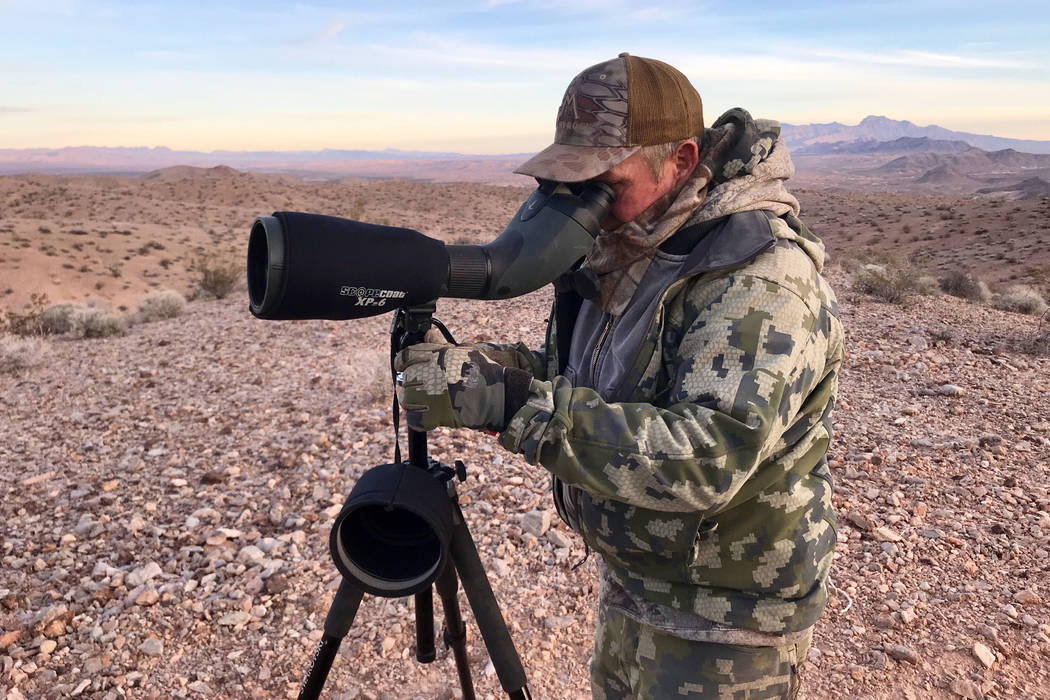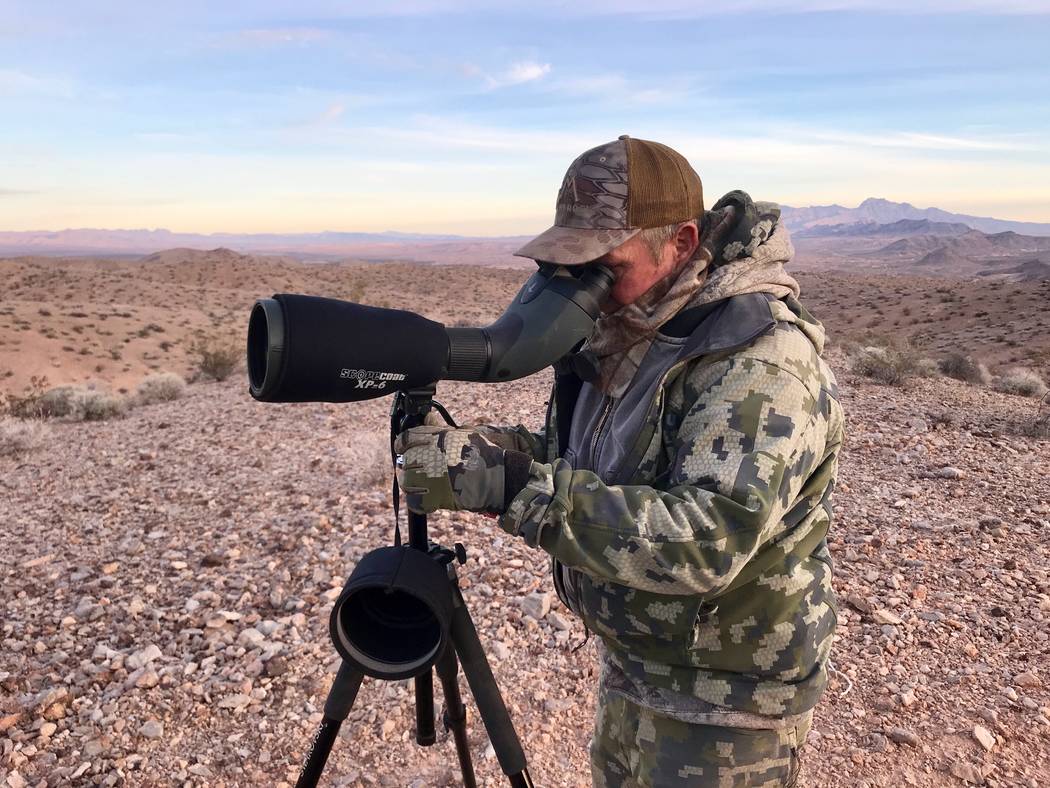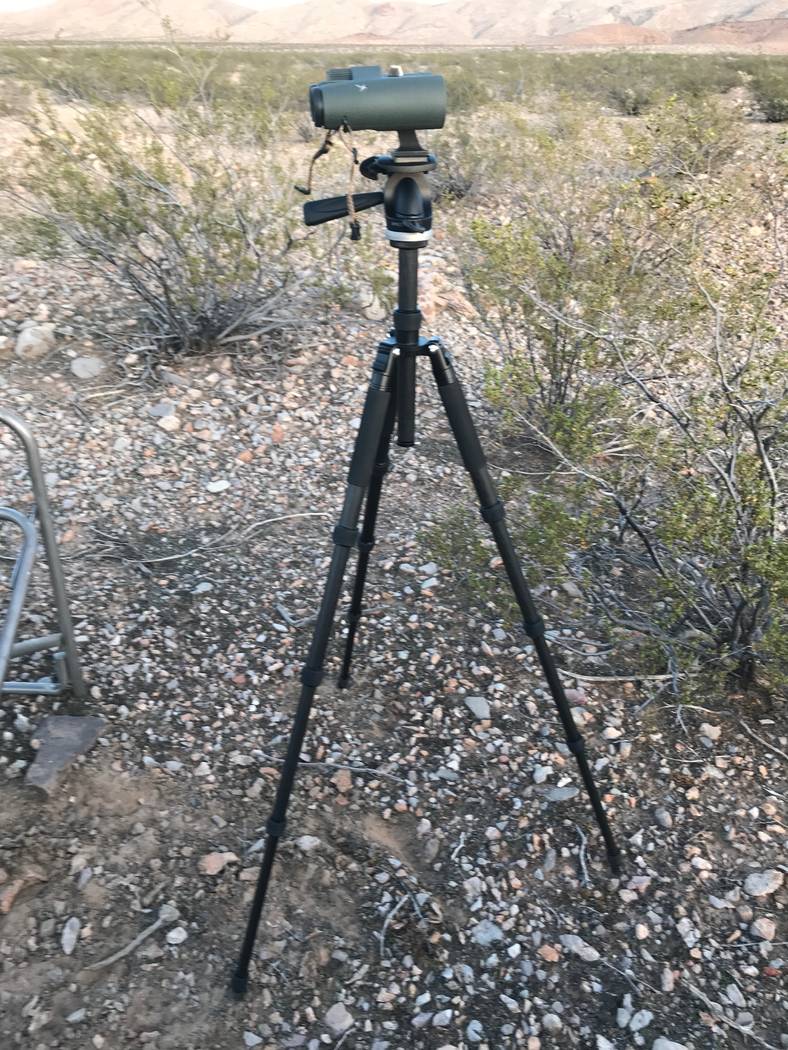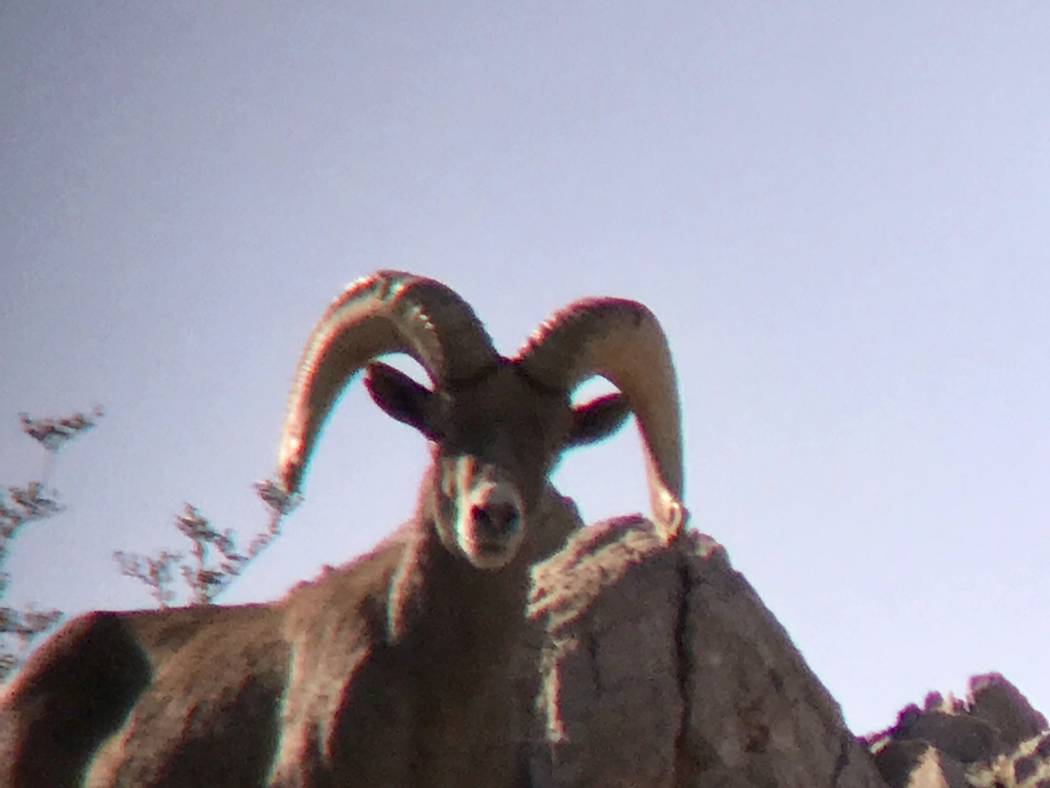Good glass is key to finding bighorn sheep in rough terrain
It was late Monday evening as I sat down to write this column, and my nerves were anything but calm. One might describe them as being on edge, but somehow that comes up a little short.
Wanting to leave nothing to chance, I looked around and took yet another inventory of the items needed when my season opened Tuesday morning.
In the corner stood my backpack, ready to go when the alarm rang long before sunrise. Next to the pack were my binoculars, tucked safely in their case with its straps adjusted so they hang comfortably over my coat and within easy reach.
One by one, I went through the pockets on both pieces of gear. That search served two purposes. First, to make sure I had everything that might be needed on a successful big game hunt, and at the same time to get rid of any unnecessary weight. Every ounce counts when hiking becomes climbing.
Second, to find a sense of preparedness that might calm my opening-day angst, a strange mixture of excitement for what the morning would bring and the fear of failing to meet the expectations that come with one of the Silver State’s coveted and difficult-to-obtain bighorn sheep tags.
“Hey, there are lots of big rams in that unit! Don’t shoot anything small,” a fellow hunter might say. Or, “Don’t be in a hurry. It’s a long season, be sure to enjoy it.”
Okay, no pressure. But in the end those expressions of encouragement are meant to be just that, and often come with offers of help. In the end, they are no different than what we all tell ourselves.
Though I was tired, sleep was slow in coming, and when it did, it was intermittent at best. It seemed like I was constantly checking my watch to see if it was time to wake up. Then, just as sleep was finally setting in, the alarm signaled that opening day had finally come. Months of preparation were finally over. Now it was time to go to work, and all the opening-day angst in the world wasn’t about to change that.
My friend Darrel Leavitt and I spent the morning seeking out elevated locations from which we could see as much country through our optics as possible. Thorough glassing is the key to finding sheep and much more effective than walking around hoping you’ll happen to find one, Darrel explained as we talked along our way.
Thorough glassing can’t be done in a few minutes because sheep live in some rugged country with lots of nooks and crannies where they can hide. Sometimes simply moving a few feet one way or the other can turn up a ram where you couldn’t see him before.
At each location, Darrel and I scoured the hillsides first with binoculars and followed up with spotting scopes when we spotted a sheep. The spotting scope allows a hunter to evaluate a ram and determine whether it is something they want to pursue.
By mid-day, we had seen six rams and a handful of ewes. Among them was a beautiful ram with full-curl horns and distinct scrolling along their length. Though he was still young, and his horns still showed that immaturity, he was fun to watch.
Then shortly after noon, our hunting adventure took a more serious turn when we spotted a mature ram bedded on an open hillside a couple of miles away. When a ram is on the borderline in terms of its age and size, it can sometimes be a difficult decision whether to pursue it. But when’s hunter sees a large, mature ram, there is no question. Of course, you put on your hunting face and go to work.
After looking the ram over we both knew it was time to go to work. So, we planned our stock, but the ram had other plans and fed his way out of sight before we could begin the long hike to his hangout. Despite our best efforts, we could not turn the ram up again. With daylight fading we made our way to the pickup. I was feeling a little disappointed and my opening-day angst returned.
Then Darrel reassured me that the sheep hunting season is a long one and the big ram simply gave us the chance to hunt again the next day.
Freelance writer Doug Nielsen is a conservation educator for the Nevada Department of Wildlife. His In the Outdoors column, published Thursday, is not affiliated with or endorsed by the NDOW. Any opinions he states in his column are his own. Find him on Facebook at @dougwritesoutdoors. He can be reached at intheoutdoorslv@gmail.com










